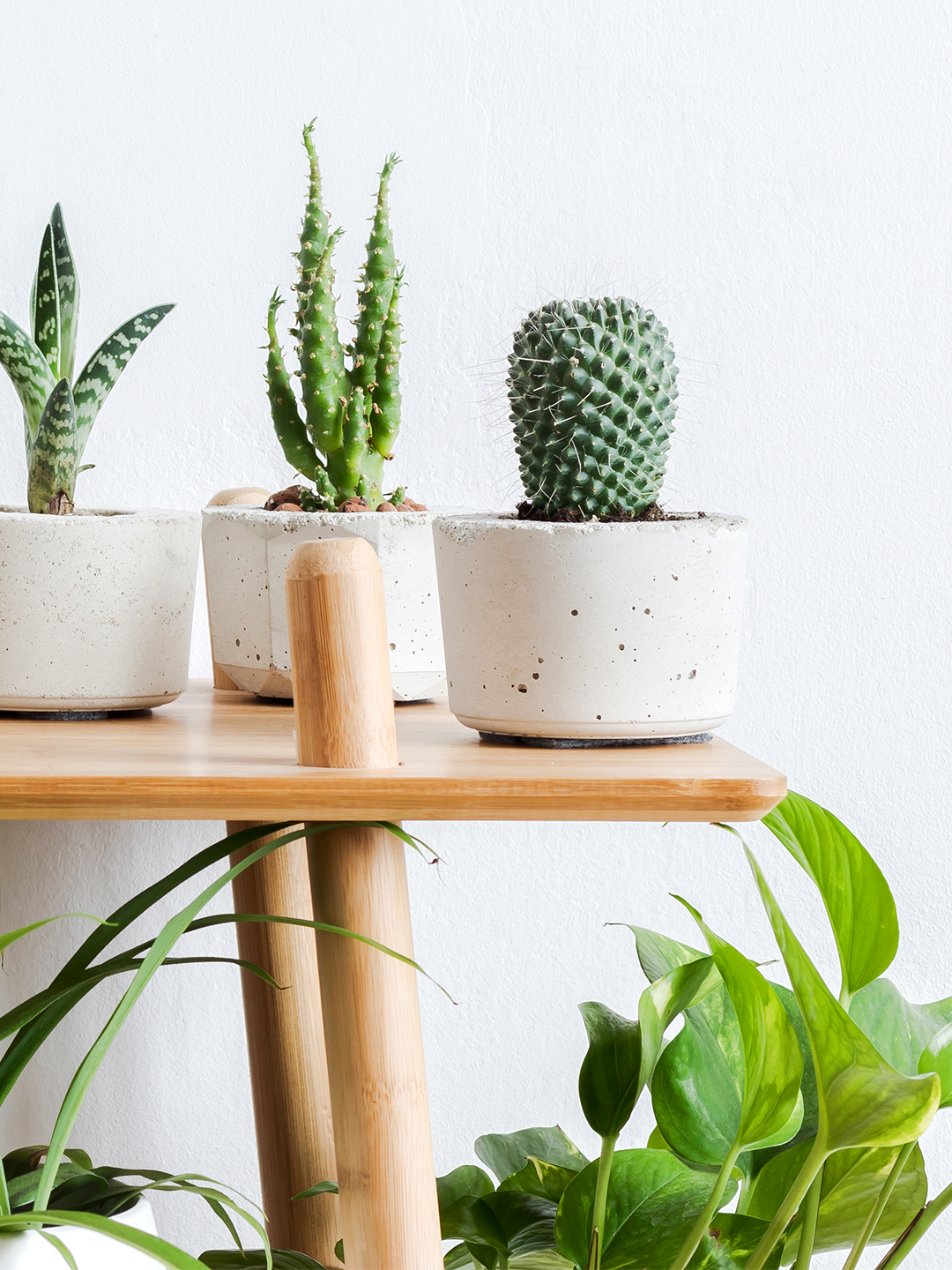We may earn revenue from the products available on this page and participate in affiliate programs.
If you’re in the market for a cactus, you’ve likely noticed that you can’t simply purchase a full-grown desert dweller online. The prickly plants don’t transport well, and much like vintage furniture, you could end up paying more in shipping than for the actual greenery. This leaves you with two options: Pay a bit extra to haul an adult prickly pear back to your apartment from a local nursery (and risk a few injuries), or mooch off a friend’s plant child and propagate your own.
An affordable, low-maintenance option, propagation is the process of growing new plants from the parent stock, typically from cuttings, offshoots, or seeds. We tapped Summer Rayne Oakes—the O.G. plant-fluencer, founder of Homestead Brooklyn, and author of How to Make a Plant Love You—for tips on how to propagate a cactus in three simple steps.
Propagation From Cuttings
Growing a new cactus from cuttings is one of the easiest and quickest methods. “You’re essentially getting a clone of the mother plant,” explains Oakes. This can be done with jungle cacti, like rhipsalis or epiphyllum, as well as desert species, including the torch, golden barrel, and bunny ears cacti.
Step 1: Use a sanitized, clean blade to cut a 2-to-5-inch piece. Not sure where to chop? If it’s a columnar cactus, like an emerald ripple, you can cut the top off (don’t worry, the parent plant will grow new tops from the severed area). If the cactus has pads, like a prickly pear, remove a small oval at the joint.
Step 2: The exposed end of the cutting needs to suberize, or dry out a bit. If you repot a sprig that is too moist, it can invite fungus. Keep in mind that a flat pad will suberize more quickly than something columnar, but generally speaking, this process takes a few days.
Step 3: Plant the cutting into a small pot filled with gritty succulent soil. Mist the dirt from time to time, but don’t let it get too wet. Place the pot in bright, indirect sunlight and monitor for roots. Gently tap the top of the cutting every few weeks to get a sense of stability. Once your new cactus has taken root, care for it just as you would a full-grown plant—water infrequently but deeply and place in a sunny spot.
Propagation From Offshoots
“Some cacti, like mammillaria and copiapoa,are more clump forming, which means they grow miniature offshoots around the base,” explains Oakes. “This is also true for some cacti-like plants like succulents.” If you or a friend has a viable candidate, you can make use of these so-called clumps and nurture an entirely new cactus.
Step 1: First, use a sharp, clean knife to cut one of the offshoots as close to the base of the mother plant as possible. If the clump is large, you can dig it up in its entirety and tease apart some of the smaller sprigs.
Step 2: Let your offshoot suberize over in the same way you would a cutting. This can take anywhere from a few days to two weeks.
Step 3: Once the cut edge is dry, replant the sprig in a pot with the appropriate potting mix. Place in bright, indirect sunlight and check for roots every few weeks, similar to a cutting. Once the plant has found new footing, make sure it gets plenty of rays, and water it every few weeks.
Propagation From Seeds
“Growing from seeds opens up a whole new world—you can grow many different kinds of cacti by seed that you’d never be able to find in a store,” says Oakes. That being said, growing from seed takes tremendous time; a small button astrophytumcactus, for instance, can take two years.
Step 1: Fill a low, wide pot with a nice cacti or seed potting soil. Moisten the soil with a spray bottle or wet it in a separate bowl first; mix it up; and place it in your container of choice. Scatter the seeds evenly on the surface and cover with a very thin layer of potting mix.
Step 2: To encourage germination you’ll need to create a humid environment—the temperature should be at least 70 degrees Fahrenheit. Place a plastic bag over the pot and store in bright but indirect sunlight. Air flow now and again is important—open up the top of the container every week or so to make sure fungus isn’t developing.
Step 3: Seeds can take weeks to several months to germinate, depending on the cactus. Once the seedlings take root, you’ll want to separate each pup into tiny trays or pots with forceps or carefully with your hands. As your cacti grow, make sure they get plenty of sun, and remember to water every so often. For more information, consult our comprehensive cactus parent guide.
See more plant stories: These 6 Plants Can Reduce Stress and Increase Productivity (Yes, Really) Before the Insta-Famous Fiddle-Leaf Fig, We Had the Pothos This Is How You Get More Plants for Free
